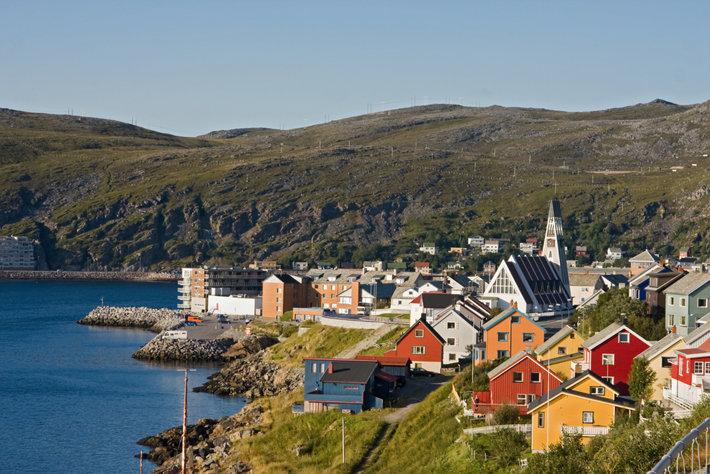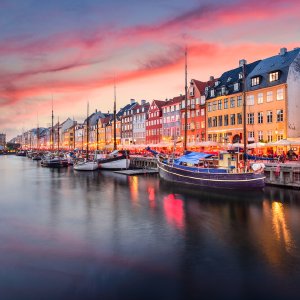Even Far-Northern Norway Is Subjected to Drug Trafficking and Addiction

Despite progress on many fronts, Norway still suffers from a high rate of drug overdose deaths. In 2015, this rate was 81 deaths per million residents, compared to a European average of 22 deaths. Norway continues to look for effective ways to reverse this trend.
Are Drugs Coming in to Norway From Belgium?
For many years, cocaine made its way from South America into Europe via Spain, sometimes with a stop-off in Western Africa. In the last few years, that trafficking pattern has changed. Now, the bulk of cocaine comes in through the Belgian port in Antwerp—a much more direct route to Norway.
How much has this trafficking increased? In 2013, 4.000 kilograms of cocaine were seized in Antwerp. By 2017, that number had shot up to 40.000 kg. In March of 2019, 1.500 kg were seized in just one shipment that was supposed to be carrying bananas.
Most of this cocaine goes directly to the Netherlands where it is cut and prepared for sale. From there, it can be trucked across the Øresund Bridge between Denmark and Sweden and then moved into Norway, or sent by boat directly to Oslo.
Heroin and cannabis seizures in Antwerp are also on the rise.
The Norwegian Addiction Profile
We can get the picture of addiction in Norway by looking at which drugs drive Norwegians into drug treatment programs.
According to the European Monitoring Centre on Drugs and Drug Addiction, the top category of admissions is “Other” at 39%. This means that, in most cases, the user was consuming multiple drugs simultaneously. The most popular combination is opioids and amphetamines; most often, the deadly opioid being consumed is heroin.
Of the approximately 18,000 people entering treatment, the next-largest category is cannabis admissions at 29%. Heroin alone sends 18% and amphetamines by themselves send 13%. More than two-thirds of treatment admissions are for outpatient care. But if cocaine is flooding the Northern Europe market, we may see these admission ratios change in the next few years.
Of course, as in other European countries, some Norwegians are buying new synthetic drugs from illicit and secret websites, but as yet, the rate of use of these drugs is low.
Norwegian Youth
A bright spot in the landscape of drug abuse in Norway is the low rates of drug use by youth. In most categories, including alcohol consumption, the rate of use among 15 and 16-year-olds is half that of the European average. The only exceptions are tranquilizers, which are used almost as much in Norway as in other countries, and inhalants, which have a slightly lower rate of use.
Very few females between the ages of 16 and 34 use cocaine, amphetamines or MDMA (Ecstasy). Use by males is much higher—especially for cocaine. About 11% of males and 6% of females in this age group use cannabis.
Effects of Drug Use and Addiction
Here are some brief notes on the effects that drug use has on Norway and its citizens.
- Compared to the European average, people in Norway who are dying from drug abuse are in the older age bracket; the age group with the highest number of deaths being from 50 to 54. The most common ages for drug-related deaths in the rest of Europe are from 35 to 39. The drug that causes 87% of those deaths is heroin. Three times as many men lose their lives than women do.
- In an attempt to save these lives, a drug-consumption room was created in Oslo—the only one in the country. This is a place where addicts can inject heroin under medical supervision. Staff in the facility are on hand to refer anyone to treatment who is willing to get help.
- Through actions taken in 2018 and 2019, Norway—the first Scandinavian country to do so—has moved towards decriminalizing the personal use of drugs such as cocaine, amphetamines and heroin and the emphasis is now moving towards treating addiction and personal drug possession as a health issue rather than a legal one.
- In 2017, an analysis of Oslo wastewater showed that this city was the third-highest in Europe in terms of amphetamine residues. Residues of MDMA (otherwise known as Ecstacy, which is most popular with young people at night clubs, parties and music festivals) had tripled since 2012.
- In 2018, Norway’s Health Minister proposed that 400 of those addicted to heroin start being given the drug by the government—a treatment referred to as “heroin-assisted treatment” or HAT. He commented that some people “are not motivated to become drug-free,” and that these people might be offered HAT. But, one wonders, does anyone truly wish to stay addicted to heroin?….
Norway Needs Solutions to Drug Use and Addiction
While it is obvious that Norway has been willing to take action to fight this social and health hazard, the country, however, lacks a broadly available holistic program that helps people fully recover from the cravings, guilt and trauma of addiction.
Just a short ferry ride away from Oslo—the epicenter of Norway’s drug abuse problem—you’ll find Narconon Europe. Situated in the countryside about 50 km north of Copenhagen, Narconon Europe offers Scandinavians a holistic, healthy method of rebuilding their lives after addiction.
This program does not give a person medications such as methadone or buprenorphine that themselves, as drugs, have negative side effects or actually serve to perpetuate a person’s reliance on drugs. Instead, generous nutritional supplementation and expert care from staff make withdrawal a tolerable process.
This is followed by a sauna-based detoxification that eliminates drug residues trapped in the fatty tissues of the body. As these residues leave the body, many people remark that their physical cravings no longer exist.
Learning to Enjoy Life Again

As each person gains a fresh, new viewpoint on life, they are better prepared to learn the skills they need to protect their fledgling sobriety and the remainder of the Narconon drug rehabilitation program teaches these skills.
The first step is to help each person learn how to leave trauma and pain in the past so they can begin to enjoy life in the present. Without this fundamental change, it might never be possible to let go of the agony of past addictions. This improvement is accomplished through a series of exercises that orient each person to their current environment. Gradually, the cumulative effect of these exercises releases a person from the traps they created for themselves through their drug use.
They can then apply themselves to learning the skills they will need to repair relationships, recover from guilt and protect themselves from those who might wish them harm. Finally, they must learn how to make the right choices, even in challenging situations that might have once sent them in search of drugs or alcohol.
The truth is that lasting recovery is possible when the causes and residual effects of addiction are thoroughly addressed. A person who wishes to leave addiction behind does not have to rely on replacement drugs like methadone. They can, with the right support and training, recover the ability to enjoy sobriety and a productive life.
If you would like to learn more about recovery from drug addiction or the international problem with drugs and alcohol, please contact us.
Updated, 26 May 2019: An earlier version of this article stated that Norway had decriminalized personal use of some drugs. In fact, as of this writing, Norway’s Parliament has voted to move the responsibility for drug use from the judicial to the public health sector. This change has not yet taken effect, however.


